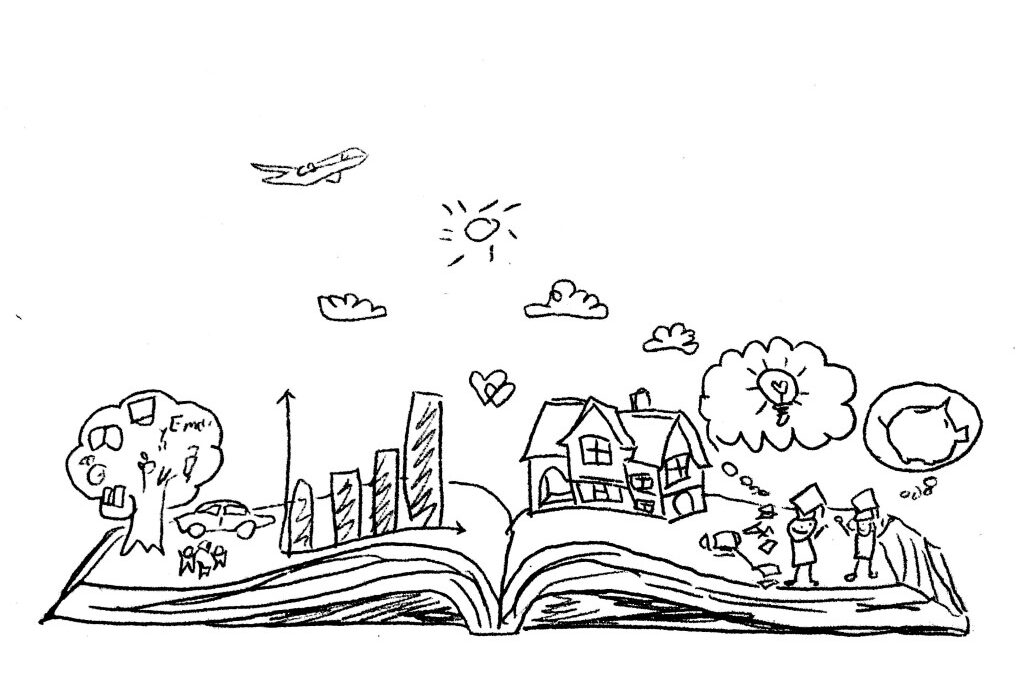
by Dr. Talia Marcheggiani, ND | Jul 20, 2015 | Art Therapy, Community, Creativity, Docere, Education, Emotions, Empathy, Finding yourself, Healing Stories, Health, Medicine, Mental Health, Mind Body Medicine, Mindfulness, Narrative Therapy, Philosophy, Politics, Psychology, Relationships, Self-reflection, Treating the Cause, Volunteering
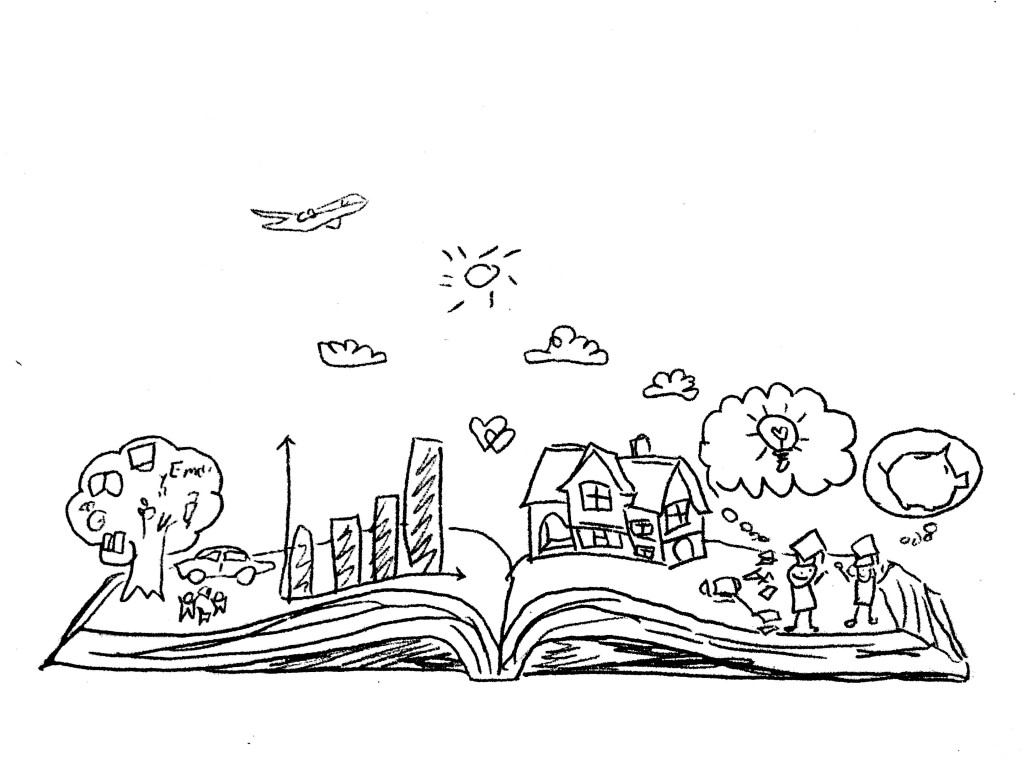 As a child, I was obsessed with stories. I wrote and digested stories from various genres and mediums. I created characters, illustrating them, giving them clothes and names and friends and lives. I threw them into narratives: long stories, short stories, hypothetical stories that never got written. Stories are about selecting certain events and connecting them in time and sequence to create meaning. In naturopathic medicine I found a career in which I could bear witness to people’s stories. In narrative therapy I have found a way to heal people through helping them write their life stories.
As a child, I was obsessed with stories. I wrote and digested stories from various genres and mediums. I created characters, illustrating them, giving them clothes and names and friends and lives. I threw them into narratives: long stories, short stories, hypothetical stories that never got written. Stories are about selecting certain events and connecting them in time and sequence to create meaning. In naturopathic medicine I found a career in which I could bear witness to people’s stories. In narrative therapy I have found a way to heal people through helping them write their life stories.
We humans create stories by editing. We edit out events that seem insignificant to the formation of our identity. We emphasize certain events or thoughts that seem more meaningful. Sometimes our stories have happy endings. Sometimes our stories form tragedies. The stories we create shape how we see ourselves and what we imagine to be our possibilities for the future. They influence the decisions we make and the actions we take.
We use stories to understand other people, to feel empathy for ourselves and for others. Is there empathy outside of stories?
I was seeing R, a patient of mine at the Yonge Street Mission. Like my other patients at the mission health clinic, R was a young male who was street involved. He had come to see me for acupuncture, to help him relax. When I asked him what brought him in to see me on this particular day, his answer surprised me in its clarity and self-reflection. “I have a lot of anger,” He said, keeping his sunglasses on in the visit, something I didn’t bother to challenge.
R spoke of an unstoppable rage that would appear in his interactions with other people. Very often it would result in him taking violent action. A lot of the time that action was against others. This anger, according to him, got him in trouble with the law. He was scared by it—he didn’t really want to hurt others, but this anger felt like something that was escaping his control.
We chatted for a bit and I put in some acupuncture needles to “calm the mind” (because, by implication, his mind was not currently calm). After the treatment, R left a little lighter with a mind that was supposedly a little calmer. The treatment worked. I attributed this to the fact that he’d been able to get some things off his chest and relax in a safe space free of judgment. I congratulated myself while at the same time lamented the sad fact that R was leaving my safe space and re-entering the street, where he’d no doubt go back to floundering in a sea of crime, poverty and social injustice. I sighed and shrugged, feeling powerless—this was a fact beyond my control, there wasn’t anything I could do about it.
The clinic manager, a nurse practitioner, once told me, “Of course they’re angry. These kids have a lot to be angry at.” I understood theoretically that social context mattered, but only in the sense that it posed an obstacle to proper healing. It is hard to treat stress, diabetes, anxiety and depression when the root causes or complicating factors are joblessness, homelessness and various traumatic experiences. A lot of the time I feel like I’m bailing water with a teaspoon to save a sinking ship; my efforts to help are fruitless. This is unfortunate because I believe in empowering my patients. How can I empower others if I myself feel powerless?
I took a Narrative Therapy intensive workshop last week. In this workshop we learn many techniques for empowering people and healing them via the formation of new identities through storytelling. In order to do this, narrative therapy extricates the problem from the person: the person is not the problem, the problem is the problem. Through separating problems from people, we are giving our patients the freedom to respond to or resolve their problems in ways that are empowering.
Naturopathic doctors approach conditions like diabetes from a life-style perspective; change your lifestyle and you can change your health! However, when we fail to separate the patient from the diabetes, we fail to examine the greater societal context that diabetes exists in. For one thing, our culture emphasizes stress, overwork and inactivity. The majority of food options we are given don’t nourish our health. Healthy foods cost more; we need to work more and experience more stress in order to afford them. We are often lied to when it comes to what is healthy and what is not—food marketing “healthwashes” the food choices we make. We do have some agency over our health in preventing conditions like diabetes, it’s true, but our health problems are often created within the context in which we live. Once we externalize diabetes from the person who experiences it, we can begin to distance our identities from the problem and work on it in creative and self-affirming ways.
Michael White, one of the founders of Narrative Therapy says,
If the person is the problem there is very little that can be done outside of taking action that is self-destructive.
Many people who seek healthcare believe that their health problems are a failure of their bodies to be healthy—they are in fact the problem. Naturopathic medicine, which aims to empower people by pointing out they can take action over their health, can further disempower people when we emphasize action and solutions that aim at treating the problems within our patients—we unwittingly perpetuate the idea that our solutions are fixing a “broken” person and, even worse, that we hold the answer to that fix. If we fail to separate our patients from their health conditions, our patients come to believe that their problems are internal to the self—that they or others are in fact, the problem. Failure to follow their doctor’s advice and heal then becomes a failure of the self. This belief only further buries them in the problems they are attempting to resolve. However, when health conditions are externalized, the condition ceases to represent the truth about the patient’s identity and options for healing suddenly show themselves.
While R got benefit from our visit, the benefit was temporary—R was still his problem. He left the visit still feeling like an angry and violent person. If I had succeeded in temporarily relieving R of his problem, it was only because I had acted. At best, R was dependent on me. At worst, I’d done nothing, or, even worse, had perpetuated the idea that there was something wrong with him and that he needed fixing.
These kids have a lot to be angry at,
my supervisor had said.
R was angry. But what was he angry at? Since I hadn’t really asked him, at this time I can only guess. The possibilities for imagining answers, however, are plentiful. R and his family had recently immigrated from Palestine, a land ravaged by war, occupation and racial tension. R was street-involved, living in poverty in an otherwise affluent country like Canada. I wasn’t sure of his specific relationship to poverty, because I hadn’t inquired, but throughout my time at the mission I’d been exposed to other narratives that may have intertwined with R’s personal storyline. These narratives included themes of addiction, abortion, hunger, violence, trauma and abandonment, among other tragic experiences. If his story in any way resembled those of the other youth who I see at the mission, it is fair to say that R had probably experienced a fair amount of injustice in his young life—he certainly had things to be angry at. I wonder if R’s anger wasn’t simply anger, but an act of resistance against injustice against him and others in his life: an act of protest.
“Why are you angry?” I could have asked him. Or, even better, “What are you protesting?”
That simple question might have opened our conversation up to stories of empowerment, personal agency, skills and knowledge. I might have learned of the things he held precious. We might have discussed themes of family, community and cultural narratives that could have developed into beautiful story-lines that were otherwise existing unnoticed.
Because our lives consist of an infinite number of events happening moment to moment, the potential for story creation is endless. However, it is an unfortunate reality that many of us tell the same single story of our lives. Oftentimes the dominant stories we make of our lives represent a problem we have. In my practice I hear many problem stories: stories of anxiety, depression, infertility, diabetes, weight gain, fatigue and so on. However, within these stories there exist clues to undeveloped stories, or subordinate stories, that can alter the way we see ourselves. The subordinate stories of our lives consist of values, skills, knowledge, strength and the things that we hold dear. When we thicken these stories, we can change how we see ourselves and others. We can open ourselves up to greater possibilities, greater personal agency and a preferred future in which we embrace preferred ways of being in the world.
I never asked R why the anger scared him, but asking might have provided clues to subordinate stories about what he held precious. Why did he not want to hurt others? What was important about keeping others safe? What other things was he living for? What things did he hope for in his own life and the lives of others? Enriching those stories might have changed the way he was currently seeing himself—an angry, violent youth with a temper problem—to a loving, caring individual who was protesting societal injustice. We might have talked about the times he’d felt anger but not acted violently (he’d briefly mentioned turning to soccer instead) or what his dreams were for the future. We might have talked about the values he’d been taught—why did he think that violence was wrong? Who taught him that? What would that person say to him right now, or during the times when his anger was threatening to take hold?
Our visit might have been powerful. It might have opened R up to a future of behaving in the way he preferred. It might have been life-changing.
It definitely would have been life-affirming.
Very often in the work we do, we unintentionally affirm people’s problems, rather than their lives.
One of the course participants during my week-long workshop summed up the definition of narrative therapy in one sentence,
Narrative therapy is therapy that is life-affirming.
And there is something very healing in a life affirmed.
More:
The Narrative Therapy Centre: http://www.narrativetherapycentre.com/
The Dulwich Centre: http://dulwichcentre.com.au/
Book: Maps of Narrative Practice by Michael White
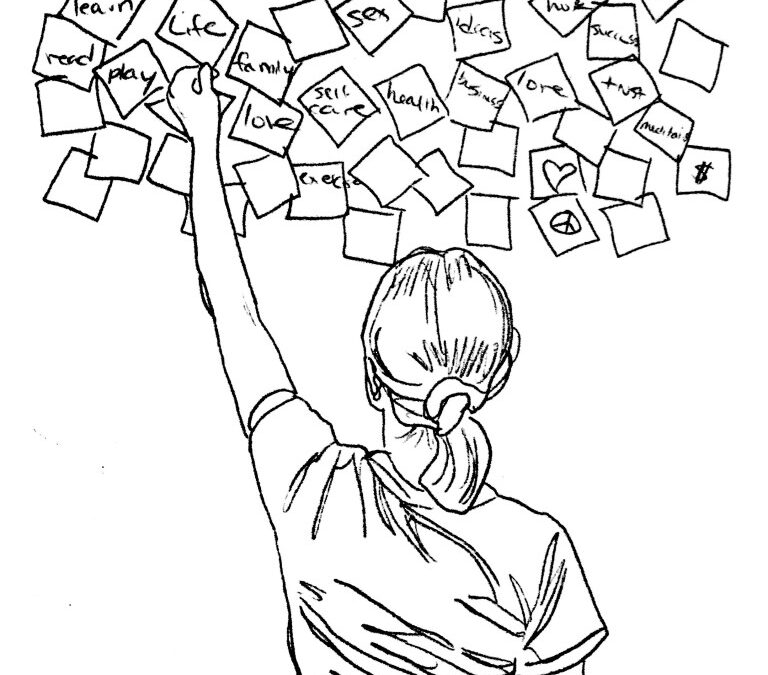
by Dr. Talia Marcheggiani, ND | May 24, 2015 | Art, Balance, Canadian College of Naturopathic Medicine, Creativity, Education, Exercise, Family, Finding yourself, Happiness, Healing Stories, Health, Ideal You, Letting Go, Listening, Medicine, Meditation, Mental Health, Mind Body Medicine, Mindfulness, Motivation, Patience, Personal, Psychology, Relationships, Self-care, Self-reflection, Stress
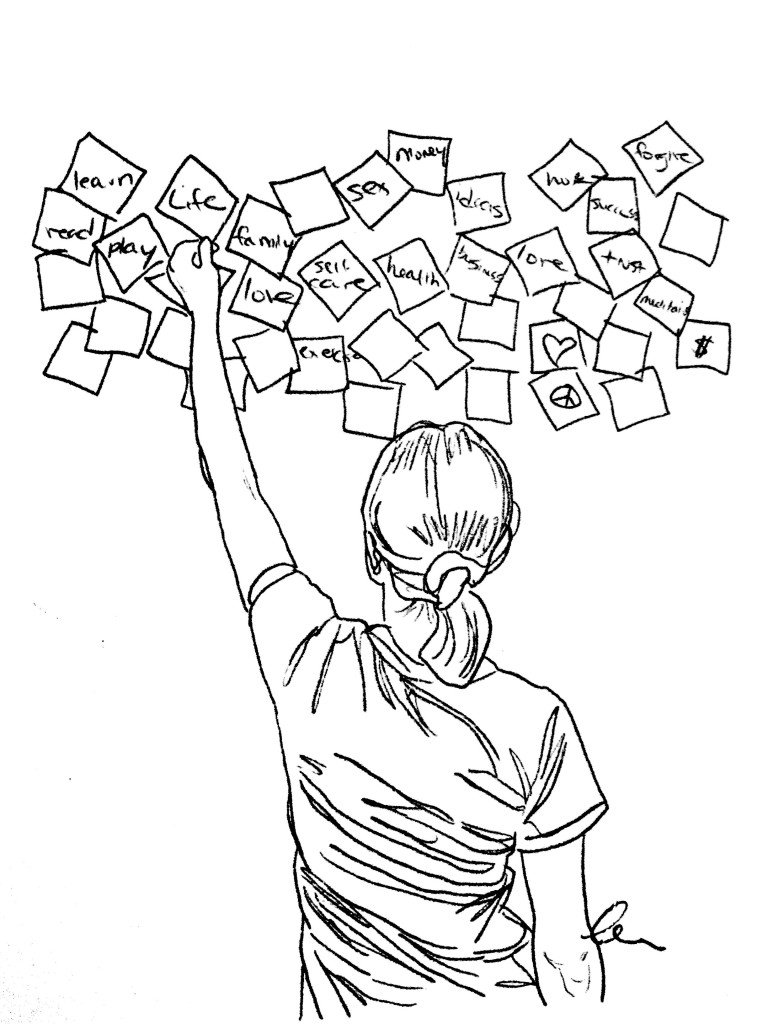 According to James Altucher, author and entrepreneur, it is possible to reinvent yourself in 5 years. In his book, The Power of No, he tells us how to reinvent our lives by first saying a big, fat No to all the things that don’t serve us—toxic friendships and relationships, stagnant 9-5’s, harmful behaviours, negative thought patterns and, well, just things we simply don’t want to do—in order to free up our lives for greater happiness, abundance and creativity.
According to James Altucher, author and entrepreneur, it is possible to reinvent yourself in 5 years. In his book, The Power of No, he tells us how to reinvent our lives by first saying a big, fat No to all the things that don’t serve us—toxic friendships and relationships, stagnant 9-5’s, harmful behaviours, negative thought patterns and, well, just things we simply don’t want to do—in order to free up our lives for greater happiness, abundance and creativity.
It is now the end of May. For me, May has been a month of reinvention. For the past 10 years it has been the month of closing and good-byes, specifically the end of the school year. The Canadian College of Naturopathic Medicine class of 2015 has graduated, as I did last year. Last week my Facebook feed was infiltrated with pictures of flowers, long black gowns and tearfully heartfelt thank-yous to the friends and family that got my colleagues through their gruelling 4 years of naturopathic medical education. Last year that was me—I remember the black gowns, the face-ache from smiling, drinking a little too much at grad formal and winning an award (“Most Likely to Write a Best Seller”—complete with misspelling of “bestseller”) while eating Portuguese chicken at my house afterwards with my friend F and his family. This year, one year later, I watch these events from afar. May 2014 offered new beginnings and chance for reinvention. I was dating, enjoying the sunshine, looking forward to a trip to India, looking forward to beginning a practice as a naturopathic doctor. Mostly, last May was about the death of one life—that of a naturopathic student—and the birth of a new one: a complete reinvention.
This year the rest of my life stretches before me like one long expansive road. My career is underway. My dating life is stagnant. The next steps are more like small evolutions rather than massive, monumental milestones. I most likely will not don a black gown again, but I can reinvent myself by following the 20 steps below. I can always check back into these practices when I’m feeling stuck, alone or afraid. When life is not going my way, there is always a chance to begin a reinvention of some sort. And, I remind myself, my current reinvention is likely well underway. Since I graduated last May, I have been in the process of reinventing: just 4 more years left until I complete my obligatory 5. While 4 years sounds like a long time, I know from experience that 4-year cycles turn over within the blink of an eye.
What stage are you on in your own personal reinvention? Wherever you are, follow these steps to reinvent yourself:
1) Say no. Say no to all the things that you don’t want to do. Say no to things that cause you harm: emotional harm, mental harm, physical harm, loss of time, loss of money, loss of sleep. We need to say no first before we can free up the time and energy to say yes to the things that we actually want. In fact, say “no” to all the things you aren’t saying “F#$% YES!” to. Read this article for more information.
2) Re-examine your relationships. Who doesn’t make you feel good? Who makes you doubt yourself? Who do you feel will reject you if you act like your true self around them? Gracefully begin to distance yourself from these relationships. You might feel lonely for some time, but loneliness is sometimes a good thing.
3) Clear out your junk. Get rid of everything you don’t use, don’t like and don’t need. Marie Kondo, in the Life-changing Magic of Tidying Up, tells us to donate, trade, sell or dispose of everything we own that doesn’t bring us joy. I think that that is a wonderful litmus test to decide what we should be holding on to. Personally, one thing that did not bring me joy was an awful old desk in my room. It was uncomfortable and ugly. I replaced it with a free desk someone I knew was throwing away. I also donated 7 garbage bags of things: books, clothes and keepsakes from when I was a child. Since then, I feel like my room has been infused with a little bit more joy. Remove all your joyless items from your life and observe how your energy changes.
4) Sit in silence. This could be meditation, staring at the wall, chanting or simply breathing. Do it with eyes closed or open. I start at 20 minutes of meditation—a meditation teacher I had told me to always use a timer to increase self-discipline—and work up to 30 some days and an hour on really good days. Start with 5 minutes. Sitting in silence helps to quiet the mind and bring us back to the present. You’ll be amazed at what you discover when you sit in silence. Read some books on meditation or take a meditation course for specific techniques, but simply sitting in silence can offer amazing benefits as well.
5) Explore the topics that interested you as a child. When I got back into painting in 2008, after getting a science degree when I’d always been interested in the art, my life changed a little bit. I started a blog in 2011; it happens to be the one you’re reading now. Get back into whatever you were passionate about as a child, even if it’s just a cartoon you used to watch.
6) Start a gratitude jar. Once a day write down something that you are grateful for—use as much detail as possible—and toss it in a jar or shoebox. When you’re feeling low, open up the jar and read the messages you’ve left yourself. I also tried a similar exercise with things I wanted to manifest or achieve. A few months later I read my entries and realized I’d achieved every single one. It’s amazing what kind of energy glass jars can attract.
7) Read. According to James Altucher, you need to read 500 books on a given topic in order to become an expert on something. You have 5 years to reinvent yourself, so start your reading now. Read one book and then, from that book, read another. It’s interesting where reading trails can lead us. I read one book, which mentions another book, read that book and then end up in a new world I never knew existed. I personally feel a little anxious when I don’t have a book beside my bed, but if you’re new to reading, start small. There are two books that I’ve already mentioned in this blog post; start from either of them and then go from there. The next on my list is The Artist’s Way, by Julia Cameron, which was mentioned in The Power of No. Who knows where that one will lead me.
8) Get 8-9 hours of sleep a night.
9) Eat your vegetables, especially leafy greens. Avoid sugar, moderate alcohol and caffeine. Eat healthy protein and healthy fats (if you don’t know what those are, welcome to my blog! browse more of my articles on healthy eating or book an appointment with a naturopathic doctor like me!—shameless self promo).
10) Exercise. Enjoy some movement every day.
11) Exercise your idea muscle. According to James Altucher, creativity is a muscle that we need to exercise lest it atrophies, like any other muscle. He recommends getting a journal and writing 10-20 ideas in it every day. They don’t have to be good ideas, just any ideas. Removing the filter of self-judgement is important for allowing creativity to flourish. We need to strengthen that muscle.
12) Get some psychotherapy. Start dealing with childhood wounds and meeting your inner critic. Address your erroneous beliefs about yourself, the world and the past. Contact me to learn where to get quality psychotherapy in Toronto at an affordable price.
13) Expand your social circle. If you find that after following step 2 your social circle has gotten smaller, start to find ways to expand it. My favourite way to reinvent my social interactions, and thus begin to reinvent my life, is to look up a meetup.com group and start attending. If you’re not sure about a meet-up group you’ve attended, give it 2 more tries before deciding not to go back. In 3 tries, you’ve either made new friends and connections or decided that the energies of the group aren’t right for you. Online dating is another cool place to start meeting people outside your social sphere and getting over social anxieties.
14) Establish a self-care routine. What would someone who loved themselves do every day? Try to do at least some of those things every day. It could be going for a 15-minute walk before doing the dishes. It could be doing the dishes rather than leaving a messy kitchen for your more tired future self. Think about what things will make you feel good and then do them. Most of the time this involves bubble baths—light some candles while you’re at it. Read this article on self-care to learn more.
15) Write a Have-Done List. Instead of writing a list of things you have to do today—your standard To-Do List—write a list of things you’ve done at the end of every day. This fills people with a sense of accomplishment from looking at everything they’ve done. It definitely beats the stress and anxiety of looking at the list of things that must get done looming before them.
16) Treat other people as if it were their last days on earth. We’ve all been told to “live each day on Earth as if it were your last.” But what if you lived as if each day on Earth were everyone else’s last? You’d probably treat them a little more nicely, be open with them, be honest with them and not gossip or speak badly about them. You might appreciate them more. The idea is James’, not mine, but I like it. I think it’s a good rule for how to treat people.
17) Pay attention to what you’re jealous of and what you despise in others. The things we are jealous of in others are often our disowned selves. If I’m jealous of my friend’s Broadway debut I’m probably disowning a creative, eccentric and artistic side of myself that it’s time I give love and attention to. The things we’re bothered by in others often represent our shadow sides, the negative things we disown in ourselves. I used to tell myself the story that my ex-boyfriend was selfish; he took care of his needs first. However, maybe I just needed to start taking care of my own needs or come to terms with my own tendencies towards selfishness. Our negative emotions in relation to others can provide us with amazing tools of enlightenment and prime us well for our own personal reinventions.
18) Let go of the things that were not meant for you. Past relationships, missed opportunities, potential patients that never call back, “perfect” apartments, etc. Say good-bye to the things you don’t get. They’re for somebody else. These things are on their own journeys, as you are on yours. If you miss one taxi, know that there are other, probably better, ones following it. So, rather than wasting time chasing after the missed taxi, meditate on the street corner until the next one comes along.
19) Listen. Ask questions. Show curiosity. When someone finishes speaking to you, take a breath and count to 2 before responding. It’s amazing how your relationships change when engaging in the simple act of listening. I love the Motivational Interviewing technique of reflective listening. In reflective listening, we repeat back the other’s words while adding something new that we think they might have meant, looking for the meaning between the person’s—your friend’s, patient’s or client’s—words. I find that this has helped the person I’m speaking with feel truly listened to. If I get the meaning wrong, it gives the other person a chance to correct me and thereby ensure that we’re really communicating and understanding each other. This one simple tool—reflective listening—has transformed my naturopathic practice and interviewing skills.
20) Be patient. Personally, I’m terrible at this. But, like you, I’ll try working on the other 19 steps while I wait for the next stage of reinvention to take hold. I’ve ordered my next book from the library. See you all in 4 years.
by Dr. Talia Marcheggiani, ND | Jan 12, 2015 | Family, Finding yourself, Healing Stories, Health, Letting Go, Love, Mental Health, Mindfulness, Philosophy, Poetry, Relationships, Self-care, Self-esteem, Self-reflection
I’m grateful for endings
that merge into new beginnings,
karmic cycles and their painful lessons
and excruciating yearly rituals that often end
in transformations.
I’m grateful for long late-night horizontal conversations
tiny loving gestures
unity
and the Universe announcing her timing
loud and clear.
For experience.
For strength and resilience
reflected
in the mirror.
For friends and family who linger
around the corner
ready to reemerge
when you call them.
For cold winter winds that bring loss
and change
and propel us on.
For memories that needn’t be analyzed;
they’re simply gifts to cherish and remember.
The winter winds push us
on through the frigid night
into spring.
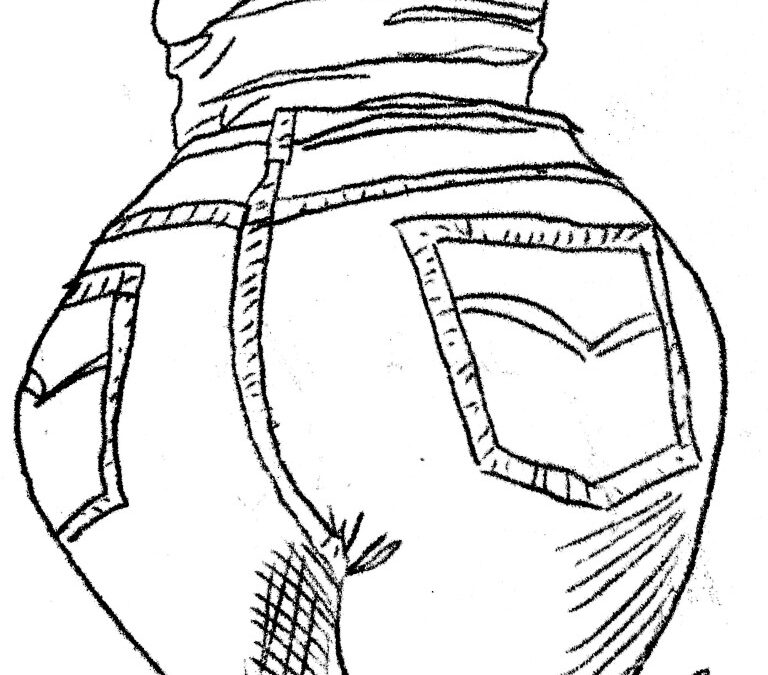
by Dr. Talia Marcheggiani, ND | Nov 20, 2014 | Acupuncture, Balance, Beauty, Book, Chronic pain, Healing Stories, Listening, Mental Health, Mind Body Medicine, Mindfulness, Preventive Medicine, Psychology, Self-care, Self-esteem, Self-reflection, Weight Loss, Women's health
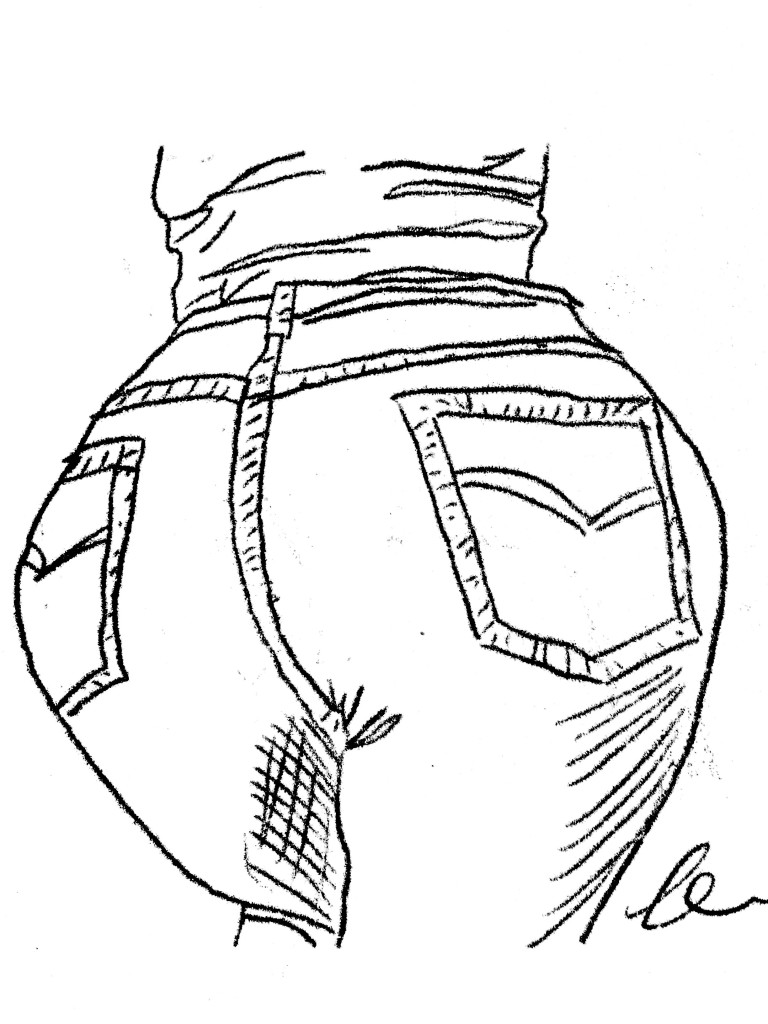 I am in my grade 12 photography class. I am 17 years old. I have my head on the desk in abject despair, as I succumb to the intense stress that was my last year of high school, where every academic move I made would dictate my future. I remember catching sight of my thighs nestled on the hard-backed plastic chair beneath the desk. And, although my struggles in that moment were seemingly unrelated to my body, I remember feeling a sense of satisfaction as I made a mental note of how the once-curvy lines of my thighs were straightening themselves out, flattening and loosening some of the fat that cushioned my thigh bones. From this satisfaction, I drew a sense of calm; I was losing weight, therefore things would be all right. The notion sounds ridiculous now but, at the time, I associated thinness with all the things I valued: friendship, love and even success. These things could only take place in someone inhabiting a thin body. I would, naturally have to complete the prerequisite of achieving “thinness” before I could have any of those things. This belief, rather than creating a connection between the rest of my life and my experience in my body, only served to fragment my bodily experience, as I tried to form my shape into the mould I thought it should inhabit.
I am in my grade 12 photography class. I am 17 years old. I have my head on the desk in abject despair, as I succumb to the intense stress that was my last year of high school, where every academic move I made would dictate my future. I remember catching sight of my thighs nestled on the hard-backed plastic chair beneath the desk. And, although my struggles in that moment were seemingly unrelated to my body, I remember feeling a sense of satisfaction as I made a mental note of how the once-curvy lines of my thighs were straightening themselves out, flattening and loosening some of the fat that cushioned my thigh bones. From this satisfaction, I drew a sense of calm; I was losing weight, therefore things would be all right. The notion sounds ridiculous now but, at the time, I associated thinness with all the things I valued: friendship, love and even success. These things could only take place in someone inhabiting a thin body. I would, naturally have to complete the prerequisite of achieving “thinness” before I could have any of those things. This belief, rather than creating a connection between the rest of my life and my experience in my body, only served to fragment my bodily experience, as I tried to form my shape into the mould I thought it should inhabit.
Fast-forward more than 10 years later. There is a sale at a store I used to frequent as a teenager. Since all my jeans have the coordinated foresight to spring holes at the same time (between the thighs, naturally), I decide to go in and try on some pants. When I realize that I take a full two sizes smaller than the last time I ever slid this brand of jeans over my hips, my chest is filled with the same contented bubbling I experienced that afternoon in photography. The anxiety of my future – my career, my empty wallet and my relationship -relaxes. I walk out with two pairs.
I am wearing the jeans on the subway when I run into my former boss. She and I chat about the weather and the school and she tells me that her young daughters refuse to wear pants because “they encumber their knees at circle time.” We chuckle at the humor of the situation and my mind travels to my closely wrapped thighs, feels the snugness of denim surrounding them. For me, pants serve as a container for the flesh that threatens to spill out of them. I remember wondering when my definition of “comfort” evolved from the freedom of the body to expand, move and breathe to this feeling of secure confinement I experience inside my jeans. I doubt these pants would allow my knees to properly stretch themselves out and bend at circle time. Luckily, when you’re pushing 30, you get to sit in chairs while people tell you stories.
As a naturopathic doctor, I preoccupy myself with the relationship our bodies have with our environment and lifestyles: how do the products we use affect our hormones? How does the food we eat and the movement we engage in affect our internal terrain? How does our mindset prevent disease? What I often don’t ask is how the learned relationship one has with their body affects health. Does the way I view my lower body cause me to engage in behaviours that affect my health? How are my tight jeans impeding lymphatic flow? How do they affect my digestion? Does my sense of self-worth affect my blood sugar? The answer is it absolutely can, if my sense of self-worth causes me to ignore my body’s food cravings and hunger signals. The way we treat ourselves and imagine our own health stems from our relationships with our bodies, which in turn dictates our future health states.
Susie Orbach, a feminist psychotherapist and author, once wrote that female babies are breastfed for less time, and picked up and cuddled less than male babies. She goes on to describe how this early treatment of women, “characterized by emotional deprivation and feelings of unentitlement”, secures the female’s place as a second-class citizen in society. More than that it teaches women to disconnect with our bodies. If our needs are not met at an early age, we are led to believe that these needs are wrong. We are taught to ignore the smelling, farting, bleeding, overflowing, curving bodies we are born with and try to recreate a “false body” that is perfect and that begins to believe it is “comfortable” being squeezed and starved and stuffed into pointy-toed shoes. Or we simply develop the ability to de-identify with the discomfort. This mechanism can lead to injury or disease if we fail to truly listen to what our bodies are trying to alert us to. (Matthew Remski writes about this extensively in his amazing research project on yoga injuries called What Are We Actually Doing in Asana (WAWADIA). I’ve been devouring his articles this week).
Orbach goes on to theorize that the symptoms the body produces in a disease state just might be a cry for help; the body is attempting to insist on its existence, to demand to be heard. So what then are menstrual cramps? Are they simply a result of inflammation or a hormonal imbalance caused by lifestyle or are they attempts made by the body to cry out, “I am female! I am menstruating! I am in need of attention!”
I remember a patient I had who would deny herself life pleasures. Convinced she needed to lose weight, she would ignore her hunger signals, even proudly telling me that she would turn to her stomach and tell it to “shut up” when the grumbling became too loud. Her chief complaint was chronic pain. I wonder if her body’s pain was simply its way of telling her it existed. I wonder if she’d have found a way to sufficiently answer her stomach’s calling, the pain would have subsided. Perhaps by listening to the experience of our bodies we can start to properly take care of our health. We can start by wearing comfortable pants that don’t “encumber the knees”, moving naturally, embracing our sexual appetites, feeding ourselves the food we truly crave and answering the need for physical touch and rest.
In a society that tends to view the body as an object, a machine that sometimes gets jammed with inconveniences such as pain, menstrual issues and eczema, I wonder how our collective health would change if we began to experience the body as a tool for healing and self-growth – something inherently wise.
To share one last story, I remember sitting across from Teresa, our school counsellor, while I was still a naturopathic student. At the time I was deciding to break up with my then-boyfriend thereby ending a 5-year relationship. I told her I had never been clear on the difference between the fear and apprehension that came with seizing something good and the repulsed feeling of avoiding something bad. This has led me to make decisions in my life that weren’t necessarily right for me. She asked me to cultivate the two feelings and locate their positions in my body. “See if there is any difference,” She told me. As I tuned in I immediately noticed that fear was closer to my heart. It was higher up and it bore the faint pleasant glow of excitement behind its initial anxiety. Disgust was located lower down. It felt like a stomach ache, a sense of doom, of indigestion: a hard-to-digest truth. It was in this moment that I fully appreciated the body’s wisdom. The old adage “listen to your gut” began to ring true to me. My gut was sending me a message that was loud and clear, but it was up to me to listen to it.
So what are some exercises we can do to cultivate body awareness and re-inhabit our bodies?
– Practice regular body scan mediations, such as those prescribed by the Mindfulness-Based Stress Reduction (MBSR) model taught by Jon Kabat-Zinn.
– Try Susie Orbach’s “Mirror Exercise” in her book Fat is a Feminist Issue or spend 3 minutes a day for 21 days staring at a body part that you have a hard time identifying with. By staring at the nose you’ve always felt was too big on a regular basis, you are able to incorporate it into your sense of self and accept it as something beautiful, in the way you would come to love the same nose on your grandfather, daughter or dear friend.
– Set a timer every hour while at work to remind yourself to tune in to your body and your breath. Notice your feet planted on the floor and move your awareness up through your feet to the top of your head. Ask yourself if there’s anything your body needs: are you thirsty, hungry, bored or lonely? Do you need to stand up and stretch? Do you need a hug?
– Get regular acupuncture or constitutional hydrotherapy to help the flow of Qi through the body.
– Finally, touch yourself. Practice ayurvedic self-massages or apply a natural moisturising lotion or oil before bed. Practice self-care in the form of hydrotherapy. Even placing the hands over the heart and breathing into that area will help to release oxytocin, a hormone responsible for love and bonding, creating feelings of calmness and attachment to the physical body.
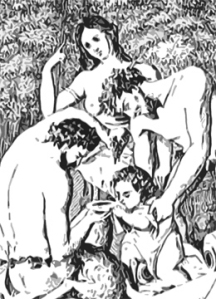
by Dr. Talia Marcheggiani, ND | Oct 13, 2014 | Healing Stories, Naturopathic Philosophy

Image source: Wikipedia
“Once Henry discovered that the autoimmune disease was a manifestation of his own self-criticism, his symptoms slowly began to subside.”
“I told the couple to stop spending so much time together. They were then able to rekindle their desire and found that their sex life improved dramatically.”
I read a lot of books. Many of these books are on alternative healing and often contain the running theme of cunning practitioners who bore into the core of the case, bring it to the client’s willing attention and <poof!> solve a long-standing with the snap of two fingers on their healing hands.
(more…)
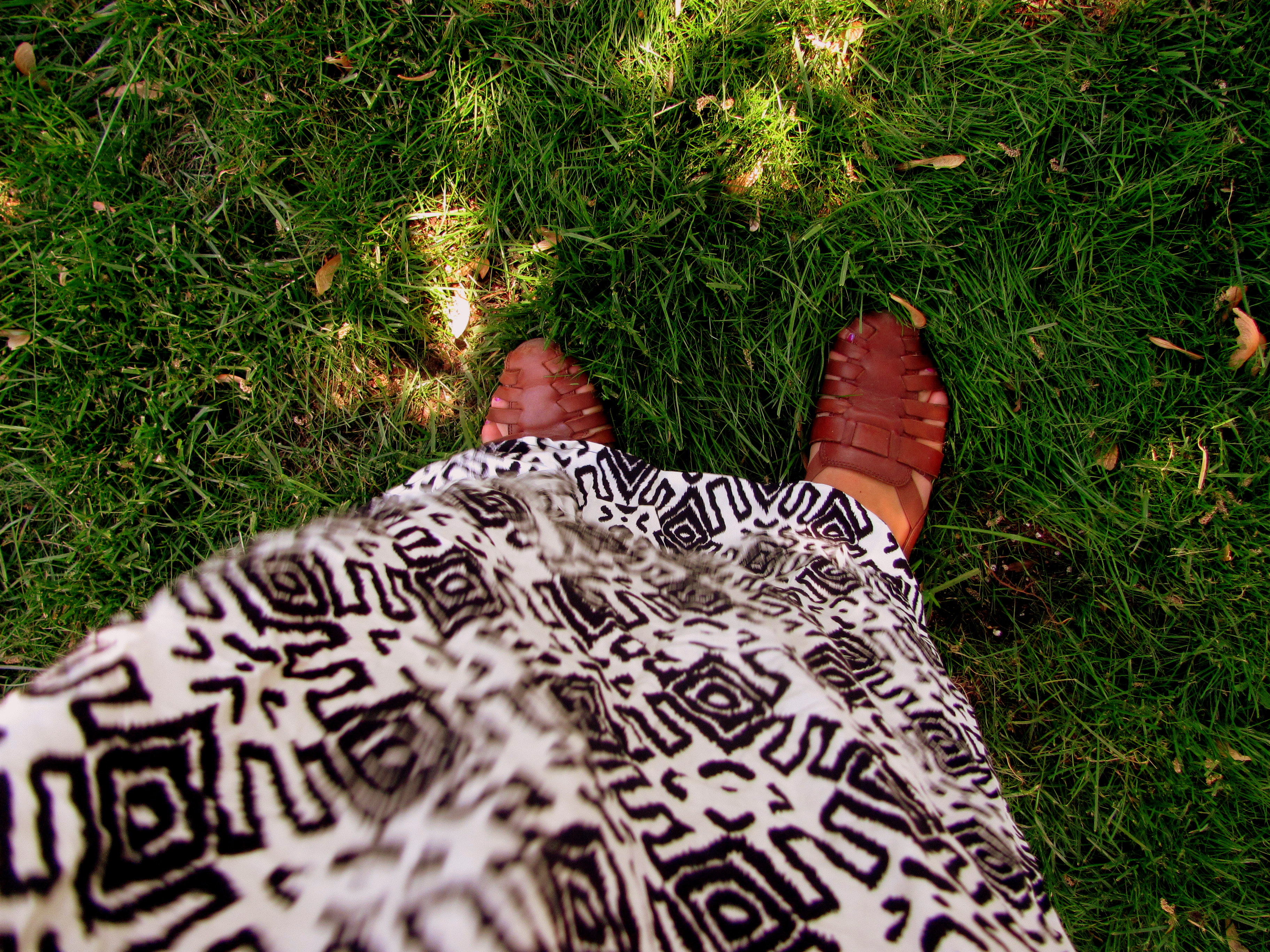
by Dr. Talia Marcheggiani, ND | Jun 8, 2014 | Gratitude, Healing Stories, Meditation, Mental Health, Mind Body Medicine, Mindfulness, Psychology

im grateful for long flowing skirts that blow in the summer breeze
and weather that’s appropriate for wearing them.
im grateful for the spanish language and the smiling people who speak it
and the songs sung in it with deep, crooning voices.
im grateful for playlists i didnt create and friday nights
where city lights dance on the water.
(more…)
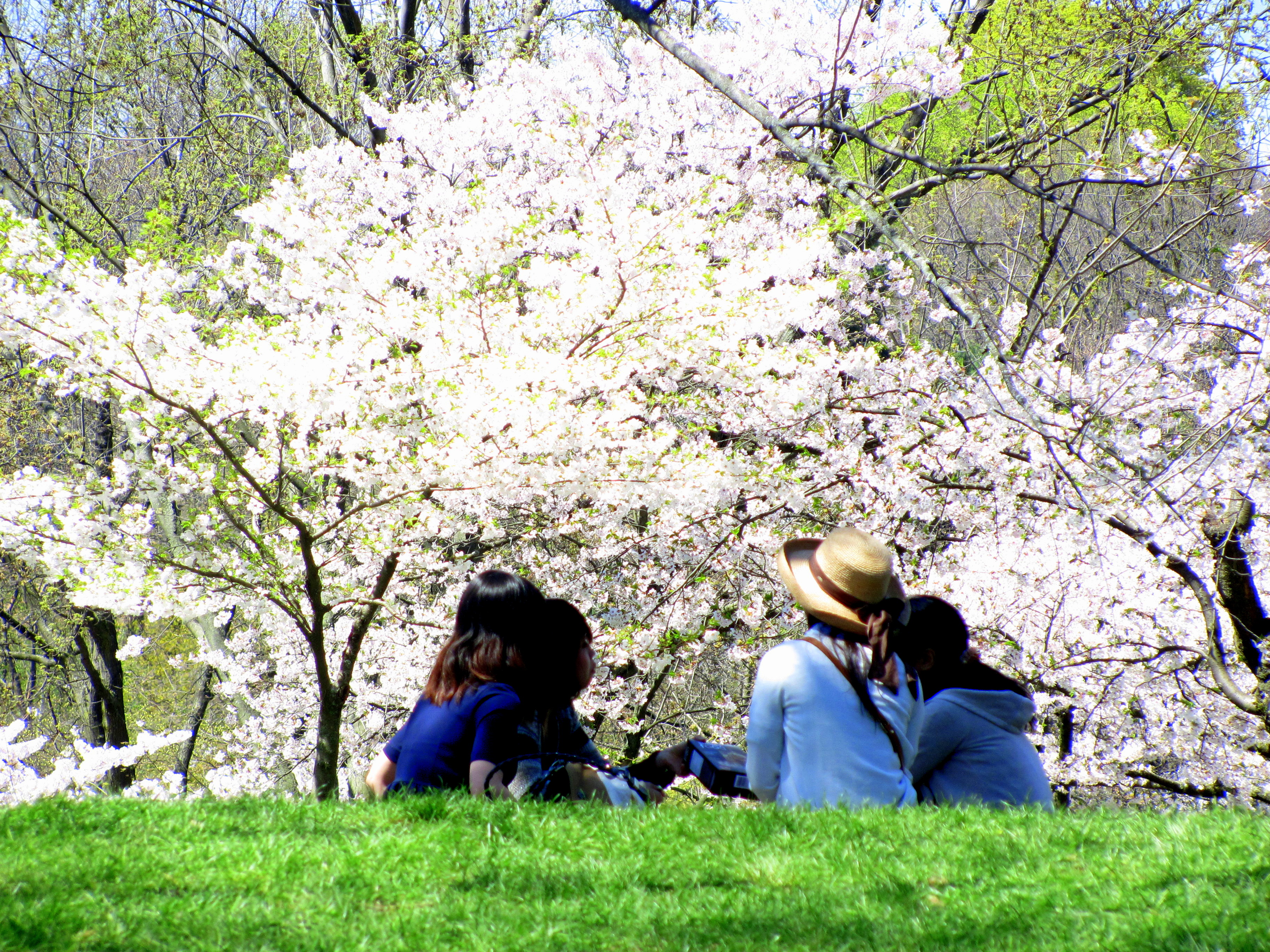
by Dr. Talia Marcheggiani, ND | Jun 6, 2014 | Balance, Happiness, Healing Stories, Meditation, Mental Health, Mindfulness, Motivation, Patience, Philosophy

“There are a lot of things up in the air in my life right now.” My friend, S, told me as we sat on the grass enjoying the first of two yerba mate-and-chit-chat experiences I’d partake in in the following two days. “I just have to trust that things will eventually settle,” she added.
“Hmmm…” I nodded, sipping from the bombilla. “It’s just that it can be so hard to do that sometimes…”
Brief silence.
“No it’s not.” S replied matter-of-factly.
And I wondered what my deal was.
On a personality questionnaire I recently filled out, I had to choose whether I’d prefer good things to happen to me or interesting things. The question intrigued me.
Of course it’s the interesting, excruciating disappointments that shape us and teach us about life and who we are. Sure, the good things can help us in our lives, but it’s the interesting things that challenge us to evolve and move forward.
And yet, in my life I’ve had a hard time trusting the interesting things. It’s so much easier to prefer the simplicity and clarity of good things.
So, at the moment that my life is more interesting than good (but still good), I am trying to learn to sit with it. I try to notice my impatience and desire to snatch all the things that are floating up around me out of the air, and rather than forcing them down to earth, watching and waiting to see where they settle on their own.
I’ve been thinking about my Mindfulness-Based Stressed Reduction course that I took exactly one year ago. I remember our instructor, Roy, pointing out to us that in our educational system we’re groomed into the mindset of pressuring ourselves to succeed, to always be moving somewhere. We’re taught that we own full control over our destinies and are responsible for the outcomes of our lives. Is this right? He asked us, in his almost-infuriatingly patient voice, as if he had all the time in the world to wait for his flock of cattle to corral themselves. The doubt he had placed in our minds violently upset one of the course participants. “I think it is right.” She passionately, angrily asserted. “We were always taught in school to strive for greatness, to try our hardest! It’s because of that message that I’m successful today.”
We watched as Roy gazed at her, non-reactively and his eyes implored her and the rest of us, And so you tried your hardest. You did as you were told. Did it make you happy? You tried your hardest and for what? You’re still here, alive, but very much at the mercy of nature and fate. You’re just as scared and confused as the rest of us. The rest of the class tensely watched the confrontation. It made us nervous to see him bearing the brunt of her anger for stirring up some deeply held beliefs and shattering her illusion of control – the illusion we are all taught to hold dear.
As a meditation instructor, I believe he must have become accustomed to removing those fragile bottom pieces of the Jenga tower and watching everyone’s world views come tumbling down like a stack of wooden blocks.
The blocks are currently in mid-air and it’s hard not to wonder where they’ll eventually land.
Or, as my friend S said, maybe it’s not.
by Dr. Talia Marcheggiani, ND | May 17, 2014 | Breath, Emotions, Empathy, Fiction, Gratitude, Healing Stories, Health, Meditation, Mental Health, Mind Body Medicine, Mindfulness, Psychology, Self-esteem
I woke up in the middle of the night to find the dragon lying in my bed. Snoring politely, he looked very small, about the size of a beagle. He was staying on his side of the bed, so I tried to get back to sleep. I’d met this beast before and knew he often brought with him ominous feelings of death and despair, but sometimes he would show up at night only to be gone in the morning. Maybe this time I wouldn’t need to worry.
The next morning, though, the dragon was still there. It rolled over and looked at me with its yellow lizard eyes. Its grey, shiny scales were smooth and glistening. I felt a sharp shiver of fear run through me. I wondered if this time he was here to stay. I worried about what he might do.
(more…)

by Dr. Talia Marcheggiani, ND | Feb 19, 2014 | Community, Guatemala, Healing Stories, Health, Volunteering, Volunteering Abroad, Writing

We take a chicken bus to the hospital in Sololá, Guatemala. The emergency room is simple: 5 beds in a row sheltered by curtains. The sanitation conditions are questionable. There are no respirators (patients are bagged manually, all through the night) or fancy medical equipment. The emergency room is a bustling gathering place for the daily misfortunes of any of the 500,000 residents of Lago Atitlán.
My classmates and I, fresh from the airport, are dressed in navy blue scrubs, shiny and new from Walmart. I have a stethoscope around my neck: a Littman Cardio III. I’d guess that it’s the most expensive stethoscope in the hospital. It’s also auscultated the least amount of hearts; I’d be willing to bet that too.
(more…)
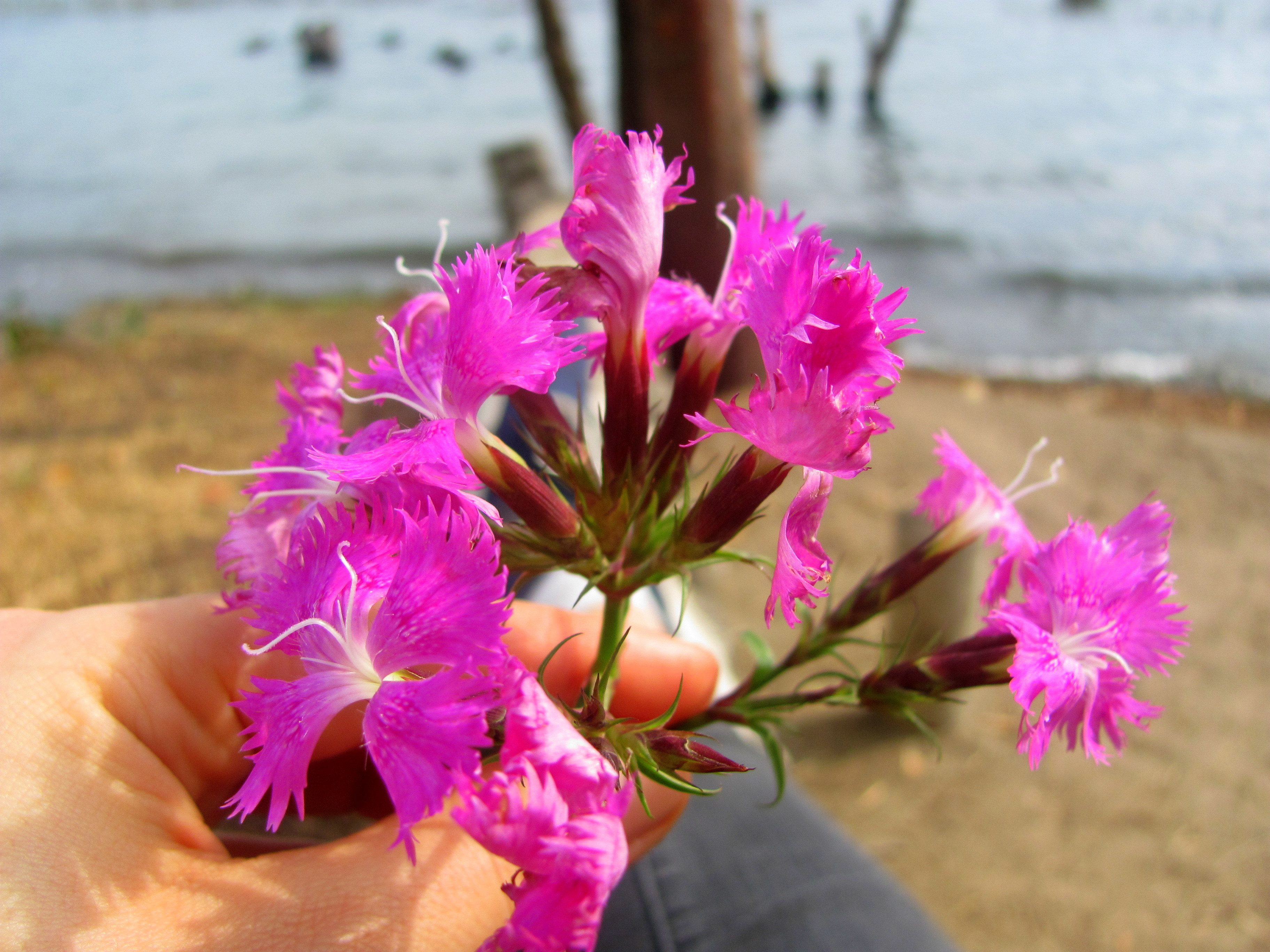
by Dr. Talia Marcheggiani, ND | Jun 17, 2013 | Balance, Canadian College of Naturopathic Medicine, Healing Stories, Health, Meditation, Mental Health, Mindfulness, Nature Cure, Naturopathic Philosophy, Naturopathic Principles, Philosophy, Robert Schad Naturopathic Clinic

I am currently reading the book Full Catastrophe Living by Jon Kabat-Zinn, the founder of Mindfulness Based Stress Reduction, MBSR, a mindful meditation program that I am currently taking, and I came across this paragraph that I thought was worth sharing with all of you:
“You probably won’t be surprised to learn that the word health itself means ‘whole’. Whole implies integration, an interconnectedness of all parts of a system or organism, a completeness. The nature of wholeness is that it is always present.
(more…)

 As a child, I was obsessed with stories. I wrote and digested stories from various genres and mediums. I created characters, illustrating them, giving them clothes and names and friends and lives. I threw them into narratives: long stories, short stories, hypothetical stories that never got written. Stories are about selecting certain events and connecting them in time and sequence to create meaning. In naturopathic medicine I found a career in which I could bear witness to people’s stories. In narrative therapy I have found a way to heal people through helping them write their life stories.
As a child, I was obsessed with stories. I wrote and digested stories from various genres and mediums. I created characters, illustrating them, giving them clothes and names and friends and lives. I threw them into narratives: long stories, short stories, hypothetical stories that never got written. Stories are about selecting certain events and connecting them in time and sequence to create meaning. In naturopathic medicine I found a career in which I could bear witness to people’s stories. In narrative therapy I have found a way to heal people through helping them write their life stories.












